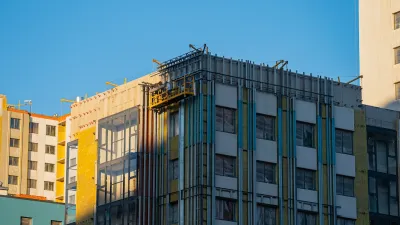A study released last week by NAIOP, the Commercial Real Estate Development Association, concluded that green standards were not financially feasible for Class A office buildings. Not so, experts say.
Real estate and energy efficiency professionals have called into question the credibility of a study released last week by NAIOP, the Commercial Real Estate Development Association, which challenged the economic feasibility of developing office buildings with progressive energy efficiency goals.
But energy efficiency advocates were quick to dispute the study's findings, citing flawed assumptions and data that they said is incomplete or absent from the study altogether.
'Designing 30 percent better than code is a pretty darn easy thing to do if you know what you're doing,' said Peter D'Antonio, president of PCD Engineering Services Inc., a Colorado-based firm that designs energy efficient buildings and conducts energy modeling and commissioning. 'We know that to build more efficiently, it costs more money up front. But we've seen you can absolutely get that money back within 10 years.'
In a statement, the U.S. Green Building Council distanced itself from the NAIOP study, calling LEED-certified buildings 'proof-positive that you can achieve 30% and greater energy efficiency using integrated design with little or no additional first costs.'
And in a biting memo posted Monday on the web site of Architecture 2030, a green building advocacy organization, the group's founder, Edward Mazria, cast the NAIOP study as a 'disinformation campaign' that was meant to 'stall, confuse and distort' energy efficiency facts in advance of Senate hearings on improving building code standards."
Thanks to Maximilian Tondro
FULL STORY: Doubts Raised on Credibility of NAIOP Energy Efficiency Study

Planetizen Federal Action Tracker
A weekly monitor of how Trump’s orders and actions are impacting planners and planning in America.

Maui's Vacation Rental Debate Turns Ugly
Verbal attacks, misinformation campaigns and fistfights plague a high-stakes debate to convert thousands of vacation rentals into long-term housing.

San Francisco Suspends Traffic Calming Amidst Record Deaths
Citing “a challenging fiscal landscape,” the city will cease the program on the heels of 42 traffic deaths, including 24 pedestrians.

Amtrak Rolls Out New Orleans to Alabama “Mardi Gras” Train
The new service will operate morning and evening departures between Mobile and New Orleans.

The Subversive Car-Free Guide to Trump's Great American Road Trip
Car-free ways to access Chicagoland’s best tourist attractions.

San Antonio and Austin are Fusing Into one Massive Megaregion
The region spanning the two central Texas cities is growing fast, posing challenges for local infrastructure and water supplies.
Urban Design for Planners 1: Software Tools
This six-course series explores essential urban design concepts using open source software and equips planners with the tools they need to participate fully in the urban design process.
Planning for Universal Design
Learn the tools for implementing Universal Design in planning regulations.
Heyer Gruel & Associates PA
JM Goldson LLC
Custer County Colorado
City of Camden Redevelopment Agency
City of Astoria
Transportation Research & Education Center (TREC) at Portland State University
Jefferson Parish Government
Camden Redevelopment Agency
City of Claremont





























